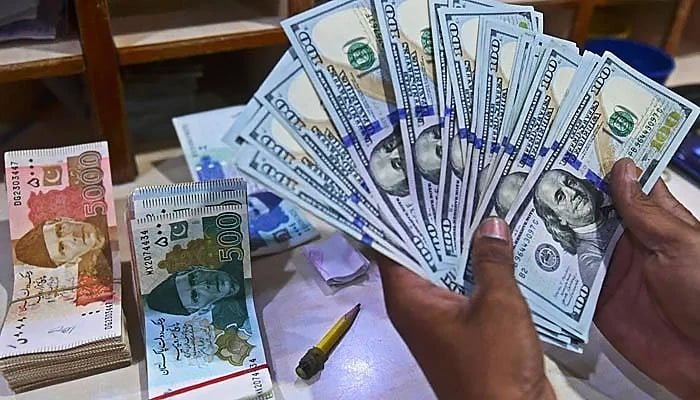Rupee falls to all-time low of 300 against dollar
Dropping exports and remittances are causing dollar liquidity crunch in economy, says expert
The Pakistani rupee plunged to its historic low against the US dollar as it traded at 300.25 in the interbank on Thursday, according to data from the Exchange Companies Association of Pakistan (ECAP).
The pressure has increased on the local unit — which closed at the historic low of 300.22 today — as demand grew for the greenback following the relaxation of import restrictions and rising risks associated with financing the country’s current account deficit.
According to ECAP, the USD is trading at Rs316 against the local currency in the open market taking the difference between the interbank and kerb rates to Rs15.75 — 5.25%.
On Wednesday, the currency fell to 299.64 against the greenback, 0.21% lower from Tuesday’s close of 299.01.
Economic expert and former adviser to finance minister Dr Khaqan Najeeb told Geo.tv that pressure from the release of already parked containers and dropping exports and remittances are causing a dollar liquidity crunch in the economy.
The interbank market, he said, is also trying to catch up with the kerb market as Pakistan has agreed to a structural benchmark with the International Monetary Fund of keeping the two markets with a difference which can not be more the 1.25% on the average in five days.
“The open markets are also supply constrained but the demand stays high because the part of imports that are not fulfilled by the interbank market are also taken care of at the kerb market and because of the dollarisation because many people tend to feel that dollar is a storer value and best to hold.”
The expert also pointed out that the monetary policy has fallen behind in creating an impact on people wanting to hold the rupee as well.
He added that inflows have to increase at the interbank level which is the best way to ensure that the Pakistan rupee tends to stabilise
“Also the certainty on the economic plan and the future planned inflows will also help as the next tranche may not be due in the coming months,” he said.
-
AI boom set to lift TSMC’s Q4 profit by 27%
-
An eye on 'global economic instability' as shares slumps, tensions intensify
-
Tesla dethroned: BYD shocks EV market as top seller in 2025
-
China sets up $8.9B fund to boost 2026 consumer goods trade-in
-
Meta to acquire Chinese AI startup Manus to expand advanced AI capabilities
-
China to roll out action plan for digital yuan expansion
-
Amazon halts plan for 'drone delivery in Italy' just before launch
-
Europe’s crypto adoption gains regional momentum; Who’s investing the most?












